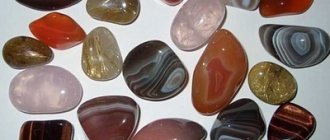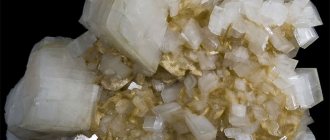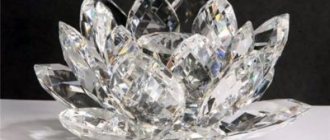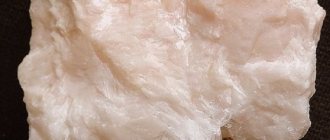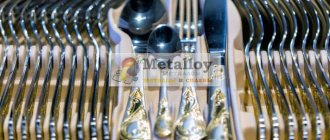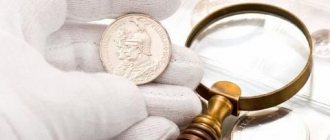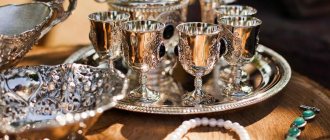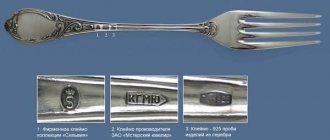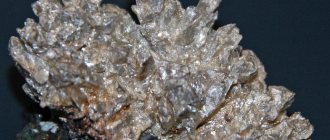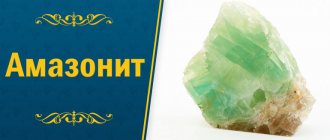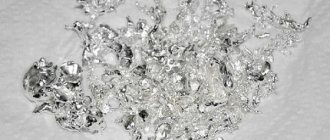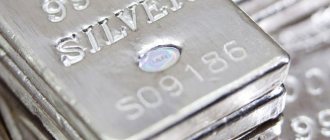Crystal, carpet and cupronickel are symbols of the wealth of Soviet families. In every third kitchen you can still find a pair of spoons from the most popular “Flame” series.
The cutlery made of nickel silver, darkened by time, is evidence of the former prosperity of the previous owners. They were given for weddings and anniversaries. It was a prestigious present. Gift wrapping with a velvet or satin finish was taken out on special occasions and nickel silver items were polished for festive table settings.
And citizens of the USSR vacationed on the Black Sea coast. In the summer, trains reached the southern resorts from all over the vast country. In compartments and second-class carriages, teaspoons in cut glasses clinked. Definitely in the cup holders - with wood grouse or Kremlin towers.
This is another symbol - the railway, travel. Rarely has anyone wondered whether there is something in common between homemade cupronickel spoons and these glass holders. And they have a common origin, history, the name of the merchant, which has become a brand. Kolchugino is a dish that is more than 100 years old.
Markings on spoons
Gold and silver have long been considered noble metals. They were not used to make cutlery. Firstly, because their cost will be very high. Secondly, their mechanical properties do not meet the necessary strength requirements; they are brittle and soft.
Read also: Doppler ultrasound of brain and neck vessels
To create high-quality cookware, various alloys were made. They were marked to make it easier to identify which metal mixture was present. Most often found:
- cupronickel alloy with the abbreviation MN or MELCH;
- nickel silver MNC;
- made of aluminum AL;
- made of stainless steel STAINLESS
Sometimes the products were coated with precious metals, and then the letters were stamped. So, on the cupronickel spoon there are the letters MN and 925 in the barrel, like a silver mark.
Repair mark
A square divided in half.
1 description option. Near the wooden overlay there is a restoration mark - a rectangle divided in half. Such terminals had been installed for several years since 1928, while revolvers (triggers, springs, sights) worn out in the battles of the imperialist and civil wars were being repaired.
Option 2 description. Small repair marks - a rectangle divided in half (read “overhaul in 1932”, when they began to remake the sighting parts), which were placed since 1932 on revolvers produced earlier, i.e. The revolver with this mark was produced before 1932.
A diamond means a complete overhaul, which in turn means a complete or partial re-sorting of parts of the revolver. During the overhaul, they could change the drum and re-barrel, but this is less likely than simply replacing a worn-out trigger. The diamond sign is less common than a rectangle divided in half. Accordingly, it means a non-standard overhaul, or a special workshop. I think this sign indicates some kind of “fine” work on the revolver.
What is cupronickel?
Cupronickel today is not nearly as popular as it was 50 years ago; this alloy is used in the manufacture of not only tableware, but also jewelry. Due to its resistance to corrosion and its external resemblance to silver, nickel silver tableware was very common at one time. The alloy composition consists of the following elements:
- at least 70% copper;
- no more than 30% nickel;
- about 1% manganese and iron.
Previously, it also included zinc, but today a material with this composition is called nickel silver, where cheap zinc partially replaces expensive nickel. Cupronickel does not tolerate moisture well and has low thermal conductivity.
DECODING THE CUP HOLDER STAMP
It is well known that almost every glass holder made in the Soviet Union carries not only a practical and artistic load, but also an informative one.
Options for the information load can be the following: manufacturer, material of the product, price of the product, and also a certain set of letters, which for many connoisseurs of this subject are “gibberish.”
The following information is intended specifically for people interested in this mystery.
The letters “YuM0 to YuM8” indicate the years of manufacture from 1960 to 1968; in 1969 the letters “9YuM” were placed.
By 1970, the stamp had changed and looked like this: 0YuM - 8YuM, which corresponds to the following years of manufacture: from 1970 to 1978.
In 1980, the OYUM brand returned; cup holders are characterized by prices that are an order of magnitude higher than the prices of previous periods.
We present to your attention two identical “Winter Troika” cup holders.
Fig.1. Coaster “Winter Troika” with the stamp “MET MM5 1st GRADE”.
Fig.2. Cup holder “Winter Troika” with the stamp “0UM MET”.
Fig.3. The front part of the cup holders.
Fig.4. The stamp of the cup holder is “Winter Troika” with the stamp “0UM MET”.
Both cup holders were produced from the 1950s until the 1970s in Mstera and are made of silver-plated nickel silver.
The first cup holder is stamped “MET MM5 1 GRADE”, the second: “0YUM MET”.
In this case, one of the presented cup holders was manufactured in 1955, as evidenced by the stamp: MET MM5 1COPT.
MNC marking on a spoon, what it is, how much such devices cost
Beautiful cutlery has always been in demand, they were presented as a gift or simply bought for use in the household. Setting the table with gold or silver forks, spoons and knives is considered good manners, but not every housewife can afford such luxury. Many people purchase cupronickel silver cutlery or nickel silver items, which are difficult to distinguish from silver ones. Taking a closer look, you can see the MNC marking on the spoon - not every user knows what it is and how much such spoons cost. This article will help you understand the term; you should start with why cutlery is “branded” in general.
“Properties and features of spoons marked MNC
This alloy itself is very similar to silverware. So much so that without special markings, it would be incredibly difficult to visually distinguish one from the other. But nickel silver is still much lighter and stronger than silver, thanks to which experienced users have a chance to determine “what is what” by picking up a spoon.
Nickel silver must be silvered, since the pure alloy gives it a metallic taste upon contact with food. That is why you should not use spoons that have deep scratches that have a slight yellow or reddish tint.
Cutlery made from this alloy is also highly resistant to corrosion, so it is easier to store and requires cleaning less often. But at the same time, caring for nickel silver spoons is still not without a number of limitations.” (quote)
Read also: Vegetable fish. What a marvelous dish?
So, nickel silver. But having further studied the interesting paper - an attachment to my spoons, something like a passport, I found some kind of discrepancy:
In the second photo there is a spread of the “passport”, where (attention!) it is written that the set includes “Silver plated dessert spoons from MELCHIOR”.
All. Deduction stuck :)
Where does the error take place, in the article, or, so to speak, in the “historical” document?) After all, in the article it is indicated in black in Russian that nickel silver and cupronickel are two big differences!
By the way, along the way, along with the “investigation”, I found another similarly marked spoon, which serves as an appendix to such a charmingly solemn couple of the Soviet period:
How does MNC alloy differ from silver?
If you do not take into account the MSC mark, it is difficult for the average person to distinguish silver-plated devices from real silver. Below is a comparison table that will help you understand the main characteristics of the products.
| Characteristics | Silver cutlery | Products made from MNC alloy |
| Appearance | Silver or white color. | Silver or white color. |
| Strength | Fragile, easily bent and deformed. | Quite durable, resistant to physical impact and deformation. |
| Weight | Very heavy. | Lightweight. |
| Physical | Reflects light well; darken over time, heat up quickly, and are characterized by high electrical conductivity. | They do not fade or darken for a long time. They are characterized by weak thermal and electrical conductivity. Resistant to corrosion. |
| Reaction with iodine | They will darken. | Spots will appear. |
| With strong friction | No physical changes are observed, but a characteristic ringing sound appears. | Change in color, appearance of characteristic spots. Accompanied by a copper smell. |
By carrying out the proposed simple manipulations, you can reliably establish whether the device is made of silver or a nickel silver alloy. If you cannot find out the material of the product experimentally, you need to contact a jewelry workshop, where a specialist will quickly determine the composition.
It is impossible to scratch a silver product with a sharp object; marks with a characteristic brown or red tint remain on nickel silver.
There is an opinion that tableware made of nickel silver or cupronickel has a detrimental effect on health. To understand how true this is, it is necessary to clarify how each of the components individually affects the physiological functions of the human body:
How to care for silver jewelry
Unfortunately, Argentum products tend to darken over time. This occurs, in particular, due to metal oxidation. To ensure that your rings always look attractive, they need to be cleaned from time to time. This simple procedure can be done at home.
Proper care of silver items will preserve their original appearance for many years.
Advantages and disadvantages
Among the key competitive qualities of cupronickel, the following positions are noted:
- cutlery and interior items made of cupronickel look presentable, the products can withstand visual competition with their elite silver counterparts;
- I am impressed by the relative availability of solutions made from a copper-nickel composition, while the external resemblance of the material to a noble white metal is impressive;
- the material heats up slowly, this property also determines the good performance potential of tableware;
- The metal alloy is characterized by inertness to corrosion and does not bend.
Products made from copper-nickel base have a long service life. For example, tableware, interior decor and jewelry made from cupronickel can serve several generations of owners.
The key disadvantage of cupronickel products is that in the absence of proper care, the original attractiveness is quickly lost and the surfaces become covered with a dark coating. Cutlery requires regular cleaning and subsequent polishing, and appropriate storage conditions must also be provided.
Mark on a cupronickel spoon
Basic rules for caring for cupronickel
Basic rules for the care and storage of cupronickel utensils include the following items:
- To clean cutlery, decorative items, coins and other products made from cupronickel, products without abrasive particles are used. Chlorine also harms the material;
- when thinking about which method is optimal for removing dark plaque at home, you can use special products or clean cupronickel products using traditional methods;
- sets of cutlery made from cupronickel alloy should be stored isolated from the external environment, since the copper-nickel composition reacts to moisture in the air by darkening.
We invite you to read: Spin mops - which ones are better?
To ensure that cupronickel utensils do not lose their presentable appearance, proven home technologies are used:
- It's easy to get rid of dark deposits using foil, soda and salt. To do this, the product is placed on foil, placed in an enamel pan, and filled with a solution of salt and soda in proportions of 4 tbsp. l. dry matter 1:1 per liter of liquid, bring to a boil. After heat treatment for 10-15 minutes, the items are removed, washed in warm running water and wiped dry with a soft cloth;
- To remove severe contamination, use ammonia or table vinegar. To do this, a napkin is moistened in liquid and the surfaces of objects are carefully treated, which will help restore the original aesthetics and noble shine of cupronickel;
- To polish products made from a copper-nickel composition, it is recommended to use crushed chalk or toothpaste. To do this, the substance is applied to the surface and rubbed with a soft cloth until shiny.
It is recommended to store cutlery in a special suitcase or container. In this case, it is advisable to wrap each item with foil, cling film or a soft cloth.
How to clean cupronickel
A large and bright dining room with a huge table, a snow-white tablecloth with hand embroidery, crystal, porcelain plates and, of course, silver family cutlery... How many of us, simple Siberian girls, can boast of such a reception? And if you can still inherit a tablecloth, crystal and plates from your grandmother, then with silver, alas, cupronickel is our everything!
Since ancient times, all alchemists have been struggling with how to make gold from available chemical elements (or an alloy similar to it in order to fool those around them), but they still cannot succeed in this trick, unlike cupronickel! Cupronickel is called table silver for a reason - it is just as beautiful (with proper care) and has a noble deep silver shine, but there is not an ounce of silver in cupronickel! Let's figure out what it is. Cupronickel is an alloy of copper (70-80%) and zinc (30-20%) with a small content of nickel, manganese and iron; it received its name in honor of its French inventors Maillot and Chorier. In Russian, these surnames sound like Mayo and Chorier, but the French name Maillot-Chorier in German was distorted into Melchior, and then spread into Russian and took root. A variety of cutlery, jewelry and interior items are made from the alloy, coins are minted and even surgical instruments are cast. Compared to silver, cupronickel has greater wear resistance and mechanical strength, is almost not subject to corrosion (it is even used in the construction of submarines!) and, at the same time, the alloy is ductile and lends itself well to processing - stamping, cutting, embossing both cold and cold. hot, excellently polished and soldered - definitely a godsend alloy! It is logical that with the discovery of this on the right, its production spread to almost all countries, because It has now become possible to “eat with a silver spoon.” Historians say that the peak of popularity of cupronickel in Russia occurred during tsarist times, when such devices were especially held in high esteem by the middle class. In high society, cupronickel was not recognized and was called “the silver of the poor.”
I think many people have carefully stored cupronickel spoons and forks in their cupboards - in special cardboard boxes on a velvet or silk backing. It was customary to take out such devices on special occasions, on major holidays and significant events. And someone decided to have a holiday for themselves every day and used cupronickel forks/spoons every day. And as a result, every housewife (sooner or later) faced a problem - how to clean nickel silver that has darkened over time? Relatively speaking, cupronickel reacts poorly in aggressive environments, therefore, in order to darken to black, it either needs to lie idle for several years, or it must be used both for feasts and for the world. Upon contact with certain substances, the alloy can form dark oxides. For example, ordinary clean water is detrimental to the appearance of a cupronickel spoon or fork - even the smallest drop that dries naturally will leave a dark spot on the surface (therefore, the golden rule, which I remembered from childhood, is that formal cupronickel spoons must be wiped off immediately after washing and dry!). Darkening can also be caused by unwashed food or fat residues clogged into a fine pattern on the surface.
For decades, housewives have been struggling with darkened cupronickel with the help of tooth powder and a brush, sometimes they used soda instead of powder. But hard particles scratch the metal, and the surface becomes covered with micro-defects in which water and food debris are retained - a vicious circle is obtained - the more we care for cupronickel with the help of tooth powder or soda, the faster the cutlery darkens ((My mother, I remember, kept a terrible treasure in the cabinet - a bottle of liquid for cleaning cupronickel and silver, and a couple of times a year she arranged general care for the appearance of our formal set of cutlery I have also heard options of wiping cupronickel with ammonia (fu-fu-fu) or placing darkened utensils in potato broth (that is, when boiling potatoes, you must always keep in mind whether or not to drain the water into the sewer).
But there is a really magical way, after which even the most terrible cupronickel spoon, sunk in God knows what kind of dirt, will sparkle like new in a couple of minutes! Soda, salt, a drop of fairy to dissolve fat and a piece of the most ordinary foil!
The history of the country in the design of cup holders
Since the plant was initially associated with the development of railway communication in Russia, it is not surprising that all this time and to this day it is Kolchugin’s coasters that add comfort to the bustle of the road. It would seem that a simple and practical thing is a glass stand. Where can we expand creatively so that for a hundred years the products will not become boring with monotony?
But in Kolchugino they found a solution, and now collectors are running wild to find a rare copy of the popular series:
- Zheleznodorozhnaya - Russian Railways logos, subject pictures, images of the capital's main stations.
- Military-patriotic - valor on the battlefields, Victory Day, orders, branches of the military, February 23, great personalities.
- State symbols - coats of arms of Russia and the USSR.
- Moscow - Kremlin, coat of arms, iconic places (Spasskaya Tower, Cathedral of Christ the Savior, St. Basil's Cathedral).
- Other cities of Russia.
- Zodiac.
- Sports.
- New Year's.
- Leningradskaya - coat of arms, bridges, palaces of St. Petersburg.
- Space, Olympics-80.
- Genre paintings by Russian artists, heroes, animals.
- Impersonal cup holders Kolchugino - the buyer can order individual engraving for a specific occasion.
The enterprise reacts to recent events, recording them in history. Thus, cup holders with the image of the Crimean Bridge were given as souvenirs to the first Tavriya passengers who crossed the Kerch Strait.
Cupronickel
Cupronickel is an alloy of copper and nickel. Sometimes small amounts of iron and manganese may be added to change some of the properties of the alloy. In general, cupronickel represents a whole group of copper-based compositions, some of which have their own names and specific areas of application.
Cupronickel
Alloy characteristics
The main properties of cupronickel are the high strength of the resulting compound, ductility and corrosion resistance to aggressive environments, in particular sea water. A characteristic feature is the color of cupronickel, which is visually difficult to distinguish from silver. This feature has served, since its invention, to be widely used in jewelry as a cheap analogue of silver.
The alloy contains the following metals:
- Copper – from 70 to 95%;
- Nickel – up to 30%;
- Iron – up to 0.8%;
- Manganese – up to 1%.
Initially, the alloy contained zinc, but nowadays compositions of copper, nickel and zinc are called nickel silver. Being somewhat cheaper than cupronickel due to the replacement of part of the nickel with zinc, nickel silver has become widespread in the production of coins.
The thermal conductivity of cupronickel compositions is one of the lowest among all copper alloys and is significantly lower than that of pure copper, and even more so, silver. And since the thermal conductivity of silver is the highest among all metals, this fact can serve as the main distinguishing feature of products made of silver and cupronickel.
https://www.youtube.com/watch?v=tSc6hQd1DNc
Product made of cupronickel
The specific heat capacity of the alloy is approximately equal to the average heat capacity of copper and nickel and is 0.4 kJ/(kg°C) for nickel silver.
The melting point of copper and nickel alloys depends on the percentage composition of its constituent components, but remains within the range of 1150 – 1230 °C.
Stability in sea water has led to the widespread use of cupronickel alloys in the manufacture of components operating in sea water.
Nickel silver, which is similar in composition, serves as the basis for the manufacture of precision resistors in electrical and radio engineering.
Both previously and currently, cupronickel is actively used in the manufacture of tableware. Cupronickel spoons are inexpensive and quite widespread.
It should be noted that cupronickel silverware, especially forks and spoons, are often coated with a layer of silver. This is not done only for aesthetic reasons or for deception.
The fact is that pure cupronickel gives a noticeable and unpleasant metallic taste.
Cupronickel spoonsCupronickel dishes
The use of copper-nickel compositions in industry has made it possible to improve the performance of product components and at the same time reduce the cost and manufacturability of manufacturing.
Cupronickel brands
There are several dozen alloys in the cupronickel group. They all have similar characteristics, but it is the individual differences in characteristics that serve to be used in a particular industry. Thus, the content of iron and manganese reduces the ductility of products, but increases wear resistance and hardness.
The marking is based on the MH symbols, where the letters indicate copper and nickel, respectively. The symbols Ж and Мц indicate the presence of iron and manganese alloy in the alloy. The numbers after the letters indicate the content of impurities.
The first is nickel, and the subsequent ones are iron or manganese. For example, the marking of the alloy MNZHMTS 30-1-1 shows the content of 30% nickel and one percent each of iron and manganese. The rest is copper as the base of the alloy.
How to distinguish cupronickel from silver
It is quite difficult to distinguish cupronickel from silver with the naked eye, especially in the absence of experience. There are several techniques that allow you to almost completely avoid mistakes:
- Availability of sample. The test is performed only on items made of pure silver. Cupronickel is marked MN. Thus, if a product has such symbols, then the metal from which it is made is cupronickel, regardless of whether the product is silver-plated or not.
- A drop of water on the surface will give a green stain on the nickel silver after a few hours. The surface of the silver will remain clean.
- The lapis pencil leaves a dark mark on the alloy without changing on the silver surface.
- A drop of iodine has the opposite effect. Keep in mind! The experiment with iodine should be carried out in an inconspicuous place, since a dark mark on a silver item will be very difficult to remove.
Thermal conductivity. Cupronickel and silver spoons warm up differently in a glass of water. A silver spoon will heat up much faster than a cupronickel spoon. Of course, this experiment can be carried out provided that there is an object for comparison with a known composition and a similar shape and mass.
, please select a piece of text and press Ctrl+Enter.
Story
The copper-brass enterprise, although technically already obsolete, was inherited by A.G. Kolchugin. Assessing the backwardness of the wooden workshops and water-powered production, the merchant decided to move the plant to a new location and equip it with modern equipment - steam driven.
This is how an enterprise, progressive by those standards, appeared, where Kolchugin planned to produce capsules, cartridges, and wire. The workshops began operating in 1871. And since the tsarist army was just undergoing rearmament, copper and brass production was in demand.
Within 5 years, the construction of a new stone workshop began. Kolchugin planned to engage in copper sheet metal. During the railroad construction boom, copper was needed in large quantities. The Kolchugin and Co. Partnership was gaining momentum, but could not keep up with the needs of progress. By the end of the 1880s, the merchant retired, but the production, like the town, secured his name.
In 1896, the managers of the copper foundry decided to expand the range. But not to go deeper into the defense industry, as they say now, but to enter the consumer goods market. The photo shows a brass samovar from Kolchugin.
Mechanical characteristics
| Section, mm | σB, MPa | d5, % | d10 | d10 | Brinell hardness, MPa |
| Cold-rolled strip as delivered in accordance with GOST 5187-2003 (transverse samples) | |||||
| ≥0.5 | ≥340 | — | — | ≥30 | — |
| 0.5 | ≥340 | — | — | ≥27 | — |
| ≥690 | — | — | — | — | |
| ≥0.5 | 440-540 | — | — | ≥4 | — |
| 0.5 | 440-540 | — | — | ≥2 | — |
| ≥0.5 | 540-690 | — | — | ≥2 | — |
| 0.5 | 540-640 | — | — | — | — |
| Cold rolled strip as delivered according to OST 4.021.085-92 (transverse samples) | |||||
| 0.1-1 | ≥340 | — | — | ≥30 | — |
| 0.1-1 | ≥690 | — | — | — | — |
| 0.1-0.5 | 440-540 | — | — | ≥2 | — |
| 0.5-1 | 440-540 | — | — | ≥4 | — |
| 0.1-1 | 540-690 | — | — | ≥2 | — |
| Cold-rolled strips as delivered according to GOST 5063-73 (transverse samples) | |||||
| ≥340 | — | — | ≥35 | — | |
| ≥640 | — | — | ≥1 | — | |
| ≥640 | — | — | ≥1 | — | |
| Cold-deformed wire as delivered according to OST 4.021.110-92 (longitudinal samples) | |||||
| 0.6-1 | ≥343 | — | ≥20 | — | — |
| 1 | ≥343 | — | ≥25 | — | — |
| 1.2-1.8 | ≥343 | — | ≥30 | — | — |
| 0.6-1 | ≥441 | — | ≥3 | — | — |
| 1.2-1.8 | ≥441 | — | ≥5 | — | — |
| 0.4-1.8 | 686-1078 | — | — | — | — |
| Drawn and rolled rods as delivered according to OST 4.021.027-92 (longitudinal samples) | |||||
| 36-50 | ≥343 | — | — | ≥8 | — |
| 6-30 | ≥343 | — | — | ≥30 | — |
| 25-30 | ≥392 | — | — | ≥7 | — |
| 6-22 | ≥441 | — | — | ≥5 | — |
| Drawn and rolled rods as delivered according to TU 48-21-84-72 | |||||
| 32-50 | ≥343 | — | — | ≥8 | — |
| 6-30 | ≥343 | — | — | ≥30 | — |
| 23-30 | ≥392 | — | — | ≥7 | — |
| 6-22 | ≥441 | — | — | ≥5 | — |
| Sections in delivery condition (longitudinal samples) | |||||
| 400-450 | 40-50 | — | — | ≥69 | |
| 600-720 | 2-3 | — | — | 157-171 |
Section question - answer
How much does a silver teaspoon weigh?
Expert opinion
Andrey Seleznev
Chemist-technologist, Volgograd
The weight of a spoon intended for tea drinking will be approximately from 5 to 50 grams.
How much does a silver tablespoon weigh?
Expert opinion
Pribrezhny Gennady Valentinovich
Jeweler 6th category
The usual weight of a silver tablespoon is 70-100 grams.
What is the price range for a silver baby gift?
Expert opinion
Grishanov Mikhail Petrovich
Jeweler, director of the Grishanov and Co. workshop
If we are talking about a symbolic gift, a spoon of 5-10 grams, it can be bought for about 500 rubles. An average-sized spoon sells for 2-3 thousand rubles. If the device has an unusual design or inserts of precious stones, then it is estimated at 25 thousand rubles and above.
Silver spoon as a gift for a baby
The cost of 1 gram of silver in Russia today?
The official cost of 1 gram of silver of the highest standard is established by the Central Bank of the Russian Federation based on fixing the prices of precious metals on the London Stock Exchange. The cost of the precious metal today is 66 rubles.
Brands of cupronickel alloys
To know what metals the cupronickel alloy consists of, you should understand its varieties. The cupronickel group includes about 65 types of metal alloys, each of them has its own designation. Classic labeling is designed to inform about the composition and percentage of the components of the material.
Common types of cupronickel alloys:
- MH19. The copper base is supplemented with nickel (N) in the ratio of 19% of the total mass;
- MNZHMts30-1-1. Alloying components - nickel, iron and manganese - are respectively 30% (N), 1% (F) and 1% (Mc);
- MNZHMts10-1-1;
- MH25;
- MH16.
Depending on the percentage of nickel in the composition, the following types of alloys are distinguished:
- constantan - the material contains nickel within 41%, is in demand as a raw material for the production of wirewound resistors;
- nickel silver - nickel makes up 15% of the total mass, the composition also includes zinc. Nickel silver is used to make state insignia, coins, jewelry and parts for precision instrument making;
- Monel - contains up to 67% nickel, the material is in demand in the production of medical equipment, the chemical and oil industries, and shipbuilding.
Cutlery made from cupronickel does not contain zinc in the material. However, it is still recommended to give preference to silver-plated or gold-plated solutions.
Buy cutlery from cupronickel in the online store comfortably
Dear customers! buy nickel silver cutlery at any time convenient for you and from almost anywhere in the world .
Cupronickel silver cutlery in the online store is presented in a rich assortment that truly amazes the imagination. Therefore, we understand how difficult it is to immediately decide on a choice and we will meet you halfway - we will provide it. How to use it?
You just need to take 3 steps:
Many of our clients have already appreciated our exclusive service. Contact us – you won’t regret it!
The online store “Kolchugmelchior” guarantees you the quality and authenticity of cupronickel cutlery. Upon purchase, you receive a copy of the certificate of conformity, original factory packaging and a warranty for 15 months from the date of sale.
The benefits and harms of cutlery
Tea and table sets made of cupronickel were very common in the USSR. There were several factories producing similar products. No one thought about the benefits and harms of these table items. However, since there are several different metals in the composition, it is not surprising that regular use of them leads to health effects. There is an opinion that if used incorrectly, cupronickel has an adverse effect on health.
Among the advantages of such utensils we can safely highlight:
- durability, strength;
- budget price;
- beautiful and status appearance;
- not subject to corrosion;
- Heats up slowly, making it easy to use.
There are also disadvantages to devices made of cupronickel:
- darken and require careful care;
- if the devices are not coated, they may have a metallic taste;
- cannot be used for cooking.
As for health, you can harm the body only by using cupronickel products for cooking. During the heating process, the oxidation of copper releases certain toxins when it comes into contact with various foods. Therefore, you cannot cook food in the oven or on the stove in cupronickel dishes. The health benefits of using cupronickel spoons regularly are obvious. A small number of metal molecules do not fight bacteria like silver, but are needed by the body. To increase the intake of substances such as iron, nickel, copper into the body, it is enough to constantly eat food using cupronickel spoons and forks.
The amount of these substances is microscopic, but has a beneficial effect on health.
Storage and care
Caring for cupronickel spoons is quite difficult, especially since cupronickel often darkens. To prevent this from happening, you need to properly care for your cutlery. If they turn black, you should not despair; you can restore them to their original state yourself.
There are many reasons for darkening; the type of product and how it is stored are important. Main reasons:
- high humidity is a real problem for cupronickel spoons, so they are stored in dry places and wiped thoroughly after washing;
- improper care, as food and substances can get into tiny cracks that change the appearance of the device over time.
Various means and methods are used to clean darkened cupronickel spoons. They are perfect for both regular cleansing and old stains.
- Foil. Most often used together with salt and soda. Foil is placed at the bottom of the container, on which the products that need cleaning are placed. They are poured with soda-salt solution and put on fire for about 15-20 minutes. Then turn off the fire and leave the products in water until they cool completely, then rinse thoroughly and wipe dry with a soft cloth.
- Special means. They can be purchased in the hardware departments of supermarkets, they are easy to use, and come in different forms: gel, powder, solution. It is most convenient to use liquid-type products and special wipes. Abrasive substances are excellent for cleaning, but they can damage a set of tablespoons. It is recommended to purchase products that envelop the device after use, protecting it from moisture.
- Soda and vinegar. This is one of the most budget-friendly methods, especially since both products are available in almost every kitchen. About 50 g of soda dissolves in a liter of water, if you use vinegar - 1 teaspoon per 200 ml. Then the products are rubbed with this mixture with a napkin, rinsed, and wiped dry.
- Decoctions. The most popular decoctions for cleaning cupronickel are potato, garlic, and shell decoctions. The shells of two eggs are placed in water (1 liter) and brought to a boil, the darkened product is lowered into it. After a few minutes, take it out and wash it, wipe it. Potato broth is considered a little less aggressive; it is better suited for periodic cleaning.
- Ammonia. 4 tablespoons of alcohol are added per liter of water, and this composition can be used to wash products even with very serious stains.
Often after procedures, cupronickel spoons become dull; to restore the lost shine, various methods are used:
- toothpaste or powder - products are simply rubbed with a product applied to a cotton pad;
- potatoes - you will need half a raw root vegetable, which is used to wipe cutlery;
- pasta - place the utensils into a pan with boiled pasta for 20 minutes, leave the water in the pan, then wash and dry it, and throw away the pasta.
To ensure that cupronickel spoons retain their original appearance for a long time and do not require frequent cleaning, the following rules must be observed:
- do not store devices in places with high humidity in a closed box; it is better to wrap each of them with food-grade film;
- do not use aggressive care products with chlorine, for example, “Belizna”;
- Wash nickel silver utensils only by hand; they cannot be washed in the dishwasher.
To see how easy it is to clean cupronickel in two minutes, watch the following video.
Marking
Gold and silver dishes are not only extremely expensive, but also fragile. Tea and cutlery made from alloys are more durable and no less beautiful. Spoons, forks, knives and other utensils have a mark, a stamp in the form of an inscription, which indicate certain information. Most often these are letters in the form of abbreviations and numbers. Items made in the USSR and Russia have the following markings:
- MNC - decoding means nickel silver composition, which is an analogue of cupronickel;
- if it says MELCH, MN - it means that you have tea or tableware made of cupronickel;
- STAINLESS on a spoon - implies stainless steel;
- AL – aluminum.
In addition, when silvering or gilding, additional markings are assigned with the sign of the corresponding metal. The MSC marking is used in the manufacture of not only cutlery, but also jewelry, equipment, and fittings. It stands for copper, nickel, zinc. Nickel silver must be plated with silver to avoid the taste and smell of metal. Soviet GOST requires the following proportionality of MNC alloy components for cutlery and tea utensils;
- copper from 60%;
- nickel from 13%;
- zinc from 18%.
The inscription MNC 15-20 means exactly the percentage ratio - 15% nickel and 20% zinc; calculating the amount of copper in this way is not a problem. According to GOST, the thickness of the coating is also determined - 24 mm for forks, spoons, tongs, tureens, trays and dishes, 18 mm for a glass holder.
You can often see the markings ZiD and ZiSh on vintage cutlery; this indicates the place of manufacture of the sets:
- ZiD - plant named after. Dzerzhinsky;
- ZiSh – plant named after. Shevchenko (there are entries in Ukrainian).
If the spoon is marked MNCC, the second C is nothing more than a designation of the price, which was previously mandatory for products of any kind. In the 90s this inclusion was canceled.
Price of alloy MNTs 15-20 today
If you decide to hand over the MNTs 15-20 alloy to a collection point, you need to study the classification of cupronickel products and prepare the scrap for purchase. The main requirements put forward by the processor are the following characteristics:
The price for 1 kg of MNC 15-20 is set after chemical analysis and visual inspection of cupronickel scrap. Such studies are carried out by an employee of the processing company, and the cost of receiving MNC 15-20 depends not only on the quality, but also on the conditions of purchase.
The scope of application of MNC 15-20 is very wide: cupronickel is used for the manufacture of numerous electrical components. MNC 15-20 can be found in various equipment, so not only a manufacturing enterprise can hand over scrap.
Pros and cons of branded spoons
To determine the necessity and rationality of using this type of cookware, you need to consider its positive and negative aspects.
Spoons with a stamp.
The advantages are:
- quite affordable price with good external characteristics;
- Possibility of use in hot containers due to low thermal conductivity;
- strength and wear resistance.
There is also a drawback to such products. With prolonged use, their appearance noticeably deteriorates, stains and deformations appear.
For a long time there was talk about the dangers of this type of dishes for health. But this fact is not entirely true. Copper does release toxins when it comes into contact with hot foods. But tableware created in compliance with all the rules will not cause harm.
The roots of the tradition of giving a spoon to a newborn
As mentioned, the tradition of giving a newborn a spoon is ancient. So, among Orthodox Christians, for the baptism of a baby, newly-minted godparents gave a silver spoon. This had to be done before teething began, so to speak, “by the teeth.” The precious metal was considered a symbol of prosperity; financial well-being was also desired with this gift to the child.
A similar meaning is conveyed by the English proverb “to be born with a silver spoon in your mouth.”
Today you can buy special spoons for gifts, beautifully decorated. The precious metal itself may have engraving. Sometimes it is a souvenir that is not used in everyday life. But most often a spoon is bought for eating, so you need to carefully choose it.
Purpose of markings on spoons
Markings are made so that people know what cutlery is made of. The capital letters used to mark Soviet spoons and forks represent the names of the metals that make up the alloy. The main types of brands used by industry in the USSR are presented in the table.
| MN (MELCH) | This option means cupronickel |
| MSC | A slightly different variety of the same metal with the addition of zinc. Another name is nickel silver |
| AL | This abbreviation means aluminum and its alloys |
| Stainless steel | The inscription stands for stainless steel |
Silver products are marked with 925 and 999 purity. Antique lovers are advised to be careful when handling pre-revolutionary items. At that time, cutlery was covered with only a thin layer of precious metal.
Currently, spoons and forks with added zinc have not been produced for a long time, so this marking is no longer relevant. Previously, this metal was used to give products a characteristic shine. Today it has been established that this substance on cutlery can cause serious harm to human health.
Many Soviet citizens were sincerely convinced that such cutlery was made of silver, and purchased them with the aim of investing in the precious metal.
From the markings on the cutlery you can find out all the information about the product.
Brand
Each product made of precious metal is marked, which consists of:
State stamp
The state stamp is a sample that is set by the state assay inspection inspection and can be applied to the product in the following ways:
The brand changed its appearance:
The shape remained the same - a circle and an oblong barrel.
Manufacturer's mark
The manufacturer's mark - the name plate - is placed on all precious items and must be enclosed in a single outline. Has four capital letters which represent three characters, namely:
Label
The label is an official document that has dimensions: 25 x 35 and 25 x 50 mm, and information on both sides. Attached to the product using a seal and thread. According to the law, the manufacturer is responsible for all information presented on the label.
( 1 rating, average 5 out of 5 )
Source
What does MNC mean on cutlery?
Many people are interested in what the abbreviation MNC means, minted on tableware. Such a mark on a spoon or other device stands for copper-nickel-zinc. This alloy is called nickel silver. The use of zinc, in addition to the attractive appearance and practicality of the product, is characterized by a reduction in the cost of production. Translated from English, the name of this alloy means “new silver”.
Devices made of nickel silver in its pure form have an unpleasant metallic taste and smell. Therefore, they are coated with silver or gold plating with a thickness of at least 0.5 micrometers.
In accordance with GOST, the designation on sets of silverware is provided if the coating layer is at least:
- 24 micrometers for spoons with forks and knives, as well as dishes;
- 18 micrometers for cup holders.
Devices with gold or silver plating are an excellent gift for any person, regardless of age or gender, social status, or religion. Such gifts are given in the following cases:
- infant baptism;
- entering a university or obtaining a diploma;
- conclusion of a marriage;
- birth of the first child;
- silver or golden wedding anniversary;
- anniversaries and other celebrations.
It has long been believed that a donated silver spoon will bring:
- newlyweds - a long, happy life in love and harmony;
- students – successful mastery of science;
- babies - strong and healthy teeth.
Giving a fork as a gift was considered a bad sign, prophesying future misfortunes.
Brand on the cup holder
The most common were cup holders made of cupronickel, which had 2 types of marks: “MELCH” and “MNTs”. The first mark belongs to an earlier period and is abbreviated as cupronickel. Later, cupronickel became more widely used, and some alloys began to be supplemented with lead. Material containing lead was not suitable for food purposes. For the production of cup holders, spoons and other tableware, cupronickel, which contains lead in its pure form, was not used and was used only with silver plating. That is why the new “MNC” brand was introduced. The MNTs cup holder was distinguished by a stable matte shine, similar to silver. Three capital letters indicated the composition of the alloy - copper, nickel, zinc.
Cost of spoons with a stamp
Giving a table set of spoons and forks made from MNC alloy as a gift is considered good manners. You can buy it at any jewelry store. An alternative way is to order online or from a collector. But you should beware of counterfeits: when making a purchase, you need to make sure that the product has the appropriate accompanying documentation.
The value and presentability of the table set will increase if the cutlery is beautifully arranged on satin linings and packaged in gift boxes. The cost of such a kit can range from 800 to 5000 rubles, depending on the following factors:
- degree of prestige of the outlet;
- Year of release;
- the percentage of nickel in the alloy (with an increase in the amount of this element, the devices acquire a light shade with a green or blue tint, otherwise the product is dark in color);
- presentability of packaging;
- external characteristics of the set (used or new).
Rare antique instruments made in Soviet or pre-revolutionary times can only be purchased from collectors or in antique stores. They are distinguished from modern products by the presence of three additional marks: the name of the master, the city of manufacture and the date of issue. The price of such sets reaches several thousand dollars. The cost of MNC cutlery is always lower than silver, but not significantly.
A low price should alert you; it may be an indicator of:
- low-quality alloy;
- small thickness of the applied layer of silver covering the product;
- high probability of counterfeit.
That is why you should be extremely careful when purchasing so as not to become a victim of scammers if you want to replenish your home “arsenal” with pleasant serving elements or give joy to friends and family.
Famous world manufacturers of silverware
Antique silver is the most valued item: its value increases every year. Rare silver from famous manufacturers of the past has the highest cultural and historical value and is sold mainly in antique stores or at auctions.
Nevertheless, even now you can buy luxurious silverware from both Russian (Veliky Ustyug, the famous Argenta, Kostroma Jewelry Factory) and foreign (British Royal Buckingham, German Robbe & Berking and Koch & Bergfeld) manufacturers. Yes, it’s not cheap, but it’s a smart investment: luxury silverware will only become more expensive from year to year!
18.08.21
Reasons for loss of color and shine of a silver spoon
Over time, silverware becomes tarnished, for obvious reasons:
- contact with a damp environment - dishes should not be washed frequently; after washing, they must be wiped dry immediately;
- reaction with chemicals - detergents, creams;
- interaction with human sweat, which contains many salts and acids.
As you can see, silver products are quite sensitive. It is for this reason that our ancestors used precious dishes only on special occasions. On the other hand, if left idle for a long time, the precious metal can also darken.
Blackened silver spoons
